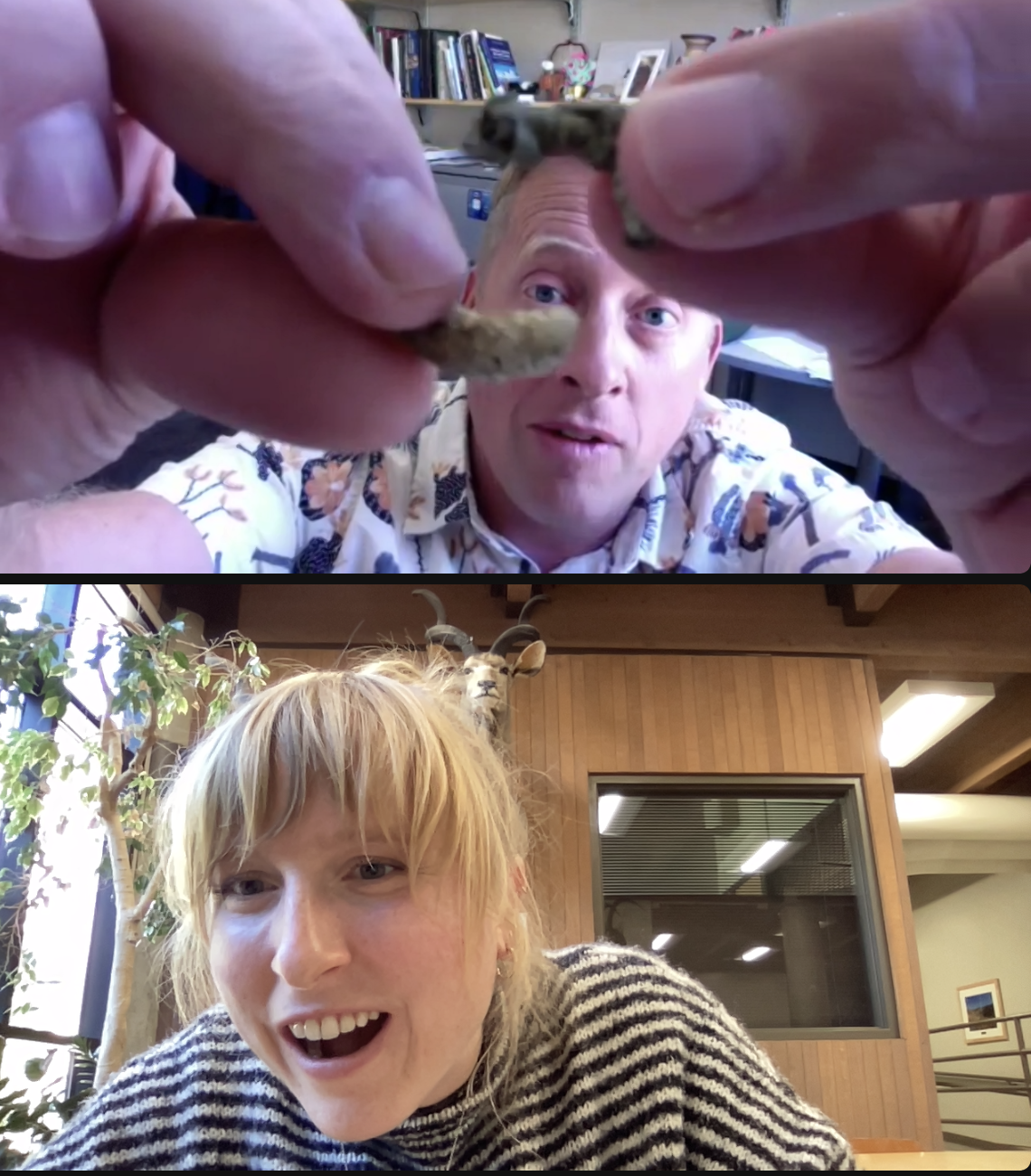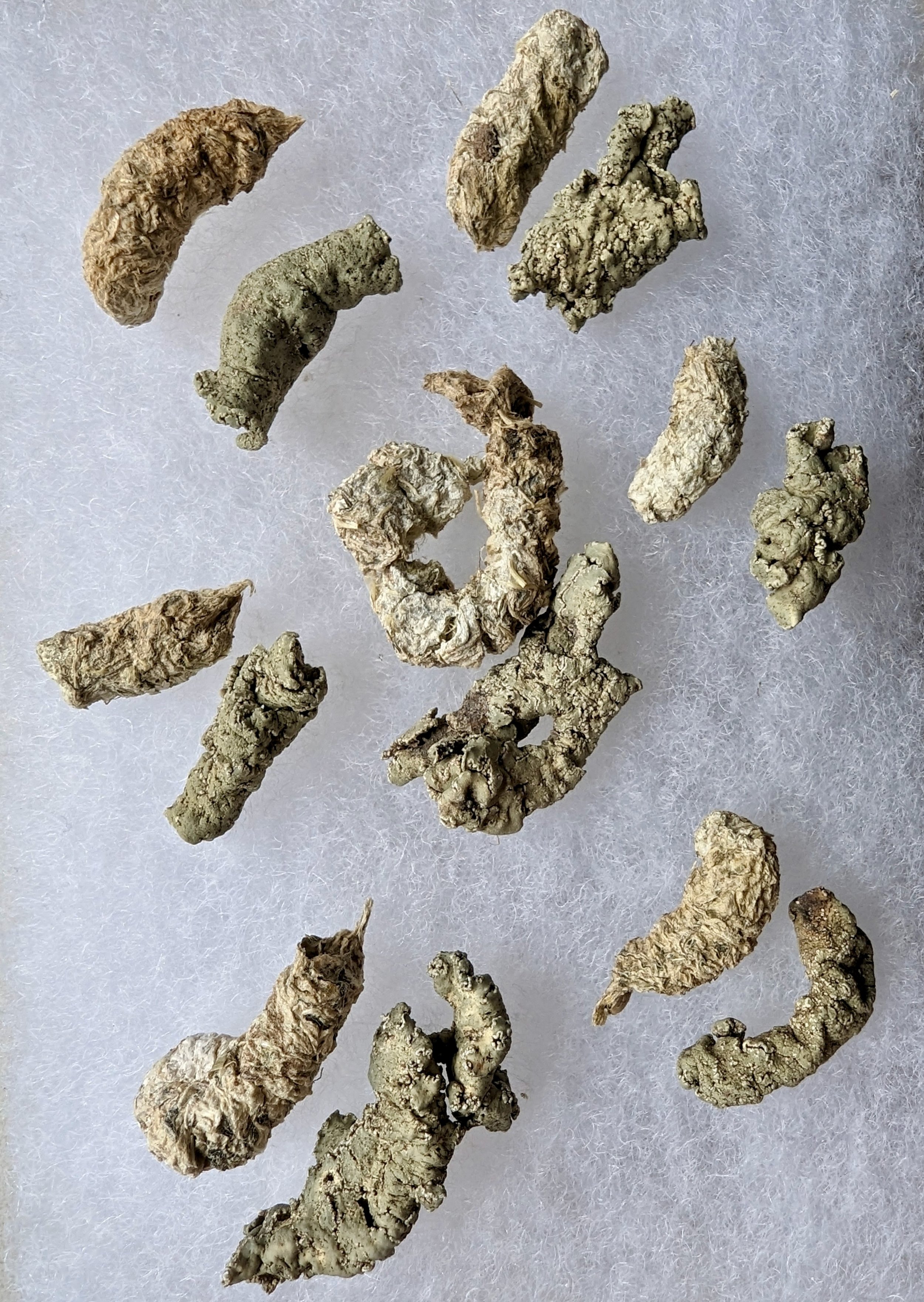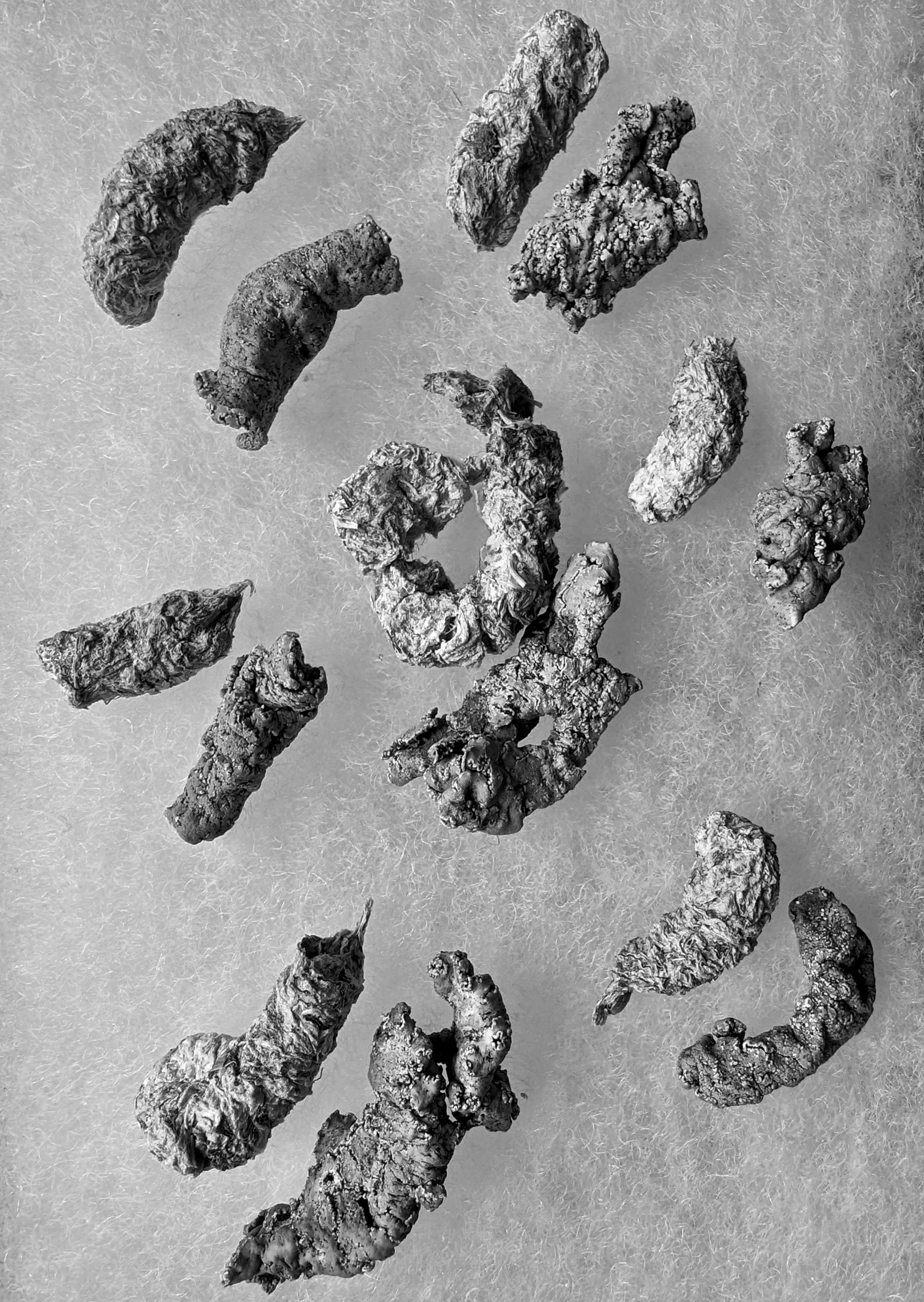Grouse Poop or Creative Cryptograms?
How can bringing home a rock covered with lichen change the trajectory of your life? Ask Steve Leavitt, Associate Professor and curator of the Herbarium of Non-Vascular Cryptograms at Brigham Young University (BYU).
“I didn’t know that rock would end up leading to a career,” he says. “But once I found a lichenology course as an undergrad at BYU, I dove in. And I haven’t looked back.”
After completing postdoctoral training in Chicago, Leavitt returned to Provo for BYU’s huge collection, his beloved desert landscapes, and the opportunity to study such a mysterious life form. “Lichens are unseen, beautiful, fascinating, and everywhere, yet no one knows about them.”
Leavitt says he loves all lichen species and can’t name one favorite. But there is one that has earned a home in his office: the Idaho Grouse Pellet (Rhizoplaca idahoensis) that masquerades as sage grouse poop. “Lichens can be tasty to some wildlife,” Leavitt explains, “so the mimicry may be an adaptation. Once an animal takes a few gross bites of what it thinks is this lichen, it decides the endeavor is not worth its time.”
“That’s why I love lichens—they’re just weird and wacky, and everywhere!”
First photo: BYU’s Steve Leavitt shows off a lichen species that masquerades as sage grouse pellets, to Communications Director Sarah Woodbury’s delight. Second photo: Includes both pellets and lichen—can you tell the difference between the two? Final photo: Shows a black and white version that is closer to what grazing ungulates looking for a snack might see (they see yellow and blue, along with black, white and shades of grey). Photos courtesy of Steve Leavitt.
The role of lichens in western ecosystems
According to Leavitt, lichens provide an important layer of diversity that supports ecosystem resilience.
One way to think of its role in a habitat, he says, is through biological soil crusts. Intact soil crusts help retain water, stabilize soil, and provide nurseries for plants to establish—and if the crust is disturbed, the entire community changes. Leavitt says that lichens fill a similar niche.
“In the West, lichens play a particularly important role in habitats. They cycle nutrients, offer forage for insects, and stabilize the soil. They can even slowly decompose rocks.”
Asking questions about these curious life forms is one thing Leavitt loves most about his job. He is currently using genome sequencing to find answers to tricky, long-standing questions. “Here in the Intermountain West,” he says, “there have been a few decades of lichenological research. But we’re way behind Europeans. We’re currently filling in big gaps in understanding of regional diversity. I’m a desert person by heart, so finding the right puzzle pieces in Utah is incredibly fulfilling.”
Circinaria squamulosa, or "Glen Canyon Sunken Disc Lichen.” Photo courtesy of Steve Leavitt.
You think you know a lichen…
Wait, so what exactly is a lichen? Zoom in a little, and lichens are strange beings: part fungus, part alga, and, as Leavitt adds, “a whole bunch of bacteria and microbes.” And while the relationship between the species that make up a lichen is complex, Leavitt says that describing it as “symbiotic” is a bit simplistic.
“There is no such thing as a ‘lichen’ species,” says Leavitt. “A lichen is a composite, like a miniature ecosystem. We’ve essentially given the name of species to what is really a tiny community.”
He says that seeing a lichen is actually seeing a process. “It’s interactions between organisms that result in this structure we call a lichen. So a lichen itself is not an organism, but an interconnection. When you understand this, you can’t help but think about our own interconnections with life around us.”
Another important contribution of the lichen community, according to Leavitt, is that they teach us to value interactions over specific events and things. “Valuing processes should become a priority, maybe even over individual organisms. It’s the processes that give rise to organisms.”
And this has implications for the ways that scientists engage with the world, according to Leavitt, which has traditionally been a highly organized simplification of reality. “Rather than, ‘here’s a fish, an insect, a tree,’ I think we should consider relationships more deeply.”
A new species on every trip
In 2019, Sageland Collaborative participated in a Bioblitz with Leavitt that resulted in a new lichen discovery.
“I was looking under this big pour-off,” Leavitt remembers. “I recognized the genus of one lichen, but thought it was such a wacky, weird shape. I sent it off to be examined, and it turned out to be a totally new species. So here we are in the middle of Glen Canyon, and we find this new lichen whose closest relative is in Scandinavia! It’s called Circinaria squamulosa for its wavy shape.”
As exciting as this discovery is, for lichenologists, it’s old hat. “Every time we go out, we discover new species. There’s a lot of undescribed diversity.”
Why do new species matter? According to Leavitt (and his favorite science writer Ed Yong), human perception can be quite biased and narrow, like the perspectives of any other species. He recommends thinking for a moment from the perspective of a dog or a worm—each of which has a different perception that is narrow and biased, yet each represents some incredible part of reality.
“Any time we can crack things open and try to see the world from a different perspective, it’s powerful,” Leavitt says. “Learning what’s living under a pour-off here or a slab there, we start to see the world in new ways. It makes us better.”
According to Leavitt, lichens help us engage the world in ways we usually don’t, and there’s “something beautiful” about that.
Leavitt and others search for lichen in the Utah desert. Photo courtesy of Steve Leavitt.
Leavitt at his happiest: sharing the joy of lichen. Photo courtesy of Steve Leavitt.
The state of lichens today
Unfortunately, many lichens are in bad shape.
Leavitt has this to say about the state of lichens today: “Here in the West with development and extraction happening across the landscape, vulnerable species are being decimated. The grouse pellet lichen, for example, is an endangered species, yet road development and sheep grazing continue in critical areas. Human influences affect all kinds of species.”
“I could document all kinds of these losses,” he says.
And like many species, lichens are facing the dual challenges of habitat loss and broader climate disruption. “Right now,” Leavitt says, “things are changing more rapidly than the algal part of lichens can evolve. We’re already at extremes for heat and tolerance of dryness, and we’re seeing a decrease in lichens that associate with some algal species.” That’s why Leavitt is working to learn the rate of evolution for the algae part of a lichen community, collaborating with colleagues in Chicago and Italy.
And fortunately, he says that there are some people who care about lichen. The US has declared the Florida percolate lichen as a federally endangered species, for example, and the Bureau of Land Management is coming up with new conservation strategies for this lichen. “In the West,” Leavitt says, “there are a lot of organizations funding research to help us understand and protect lichens. They are also trying to raise the public’s interest in organisms—like lichens—that don’t fall into the category of large, charismatic wildlife species. It’s exciting that some government groups and organizations see this interest and are starting to prioritize lichens.”
A small-but-mighty community
The lichen community is “beautiful,” according to Leavitt: small and full of people who get along well (which starts to sound suspiciously like lichens). “There are plant people, there are insect people, and there are fungi people, and we are none of those! We’re quirky. We root for the underdog. We’re more interested in interactions than solo species.”
He says that while he doesn’t necessarily wish everyone were as passionate as his community, he does wish that more curiosity was directed toward the humble lichen.
“If someone sees a lichen growing on a sidewalk or tree, my real wish is that they would just stop and ask what is going on. That’s all I want—for people to develop curiosity and just say once in a while, ‘This is so freaking weird.’”
Leavitt searches for lichen in Upper Sand Creek, Utah. Photo courtesy of Steve Leavitt.
Author: Sarah Woodbury







